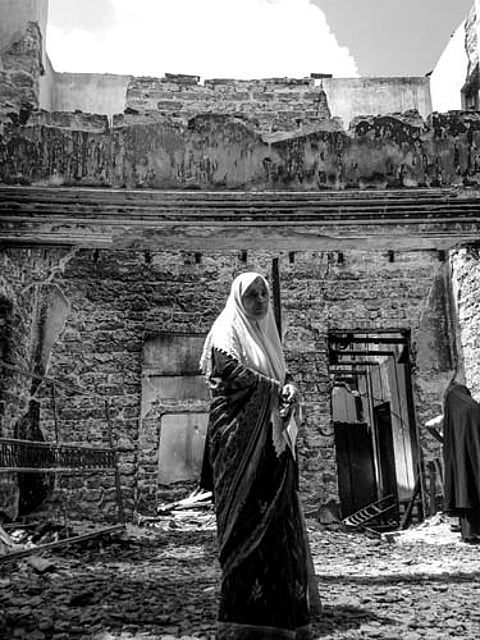In the wake of anti-Muslim violence in Aluthgama.
Photo: Flickr / Vikalpa | Groundviews
Comment
Violence in the time of ‘no-war’
Sri Lanka’s militarised approach in the aftermath of the civil war has had destabilising social consequences.
Fear eclipses the minorities. For the war-torn Tamils in the north and east it is the fear of social anarchy and everyday violence. It is fear of violence within the home, by the neighbours, on the roadside and of the police and the military. For Muslims living around the country, it is the fear of insults, of mob attacks and a state turned against them.
How does one explain the contradiction between the widespread military presence meant for repressive order, and the social anarchy taking hold of a war-torn society? The government claims the massive presence of security forces in the country is there to ensure the order necessary for development and economic prosperity, but then, how are Muslim businesses targeted with impunity?

